Reflections on the Impact of Sign Painters, Ten Years Later
Sign Painters' stars reflect on its influence, alongside those whose sign painting lives it changed.
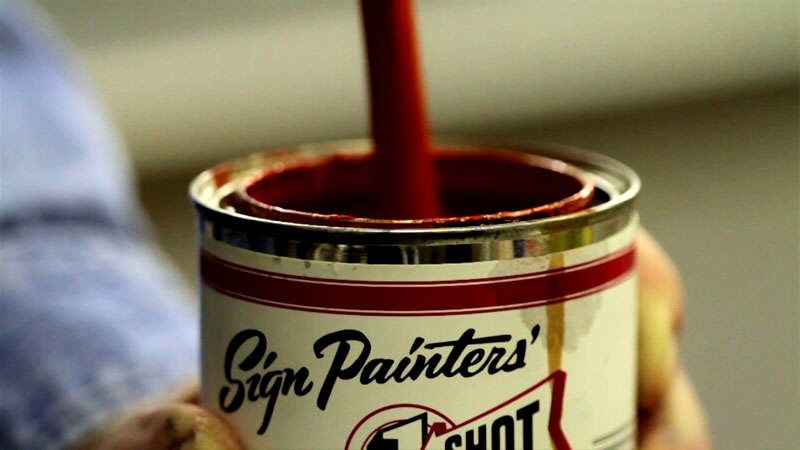
I was recently invited by Signlink magazine to write an article reflecting on the impact of the film, and book, Sign Painters (copied below). This is my first bi-monthly column for them, and I've also snuck in a shorter 'Ghost Sign Corner' piece for each issue.
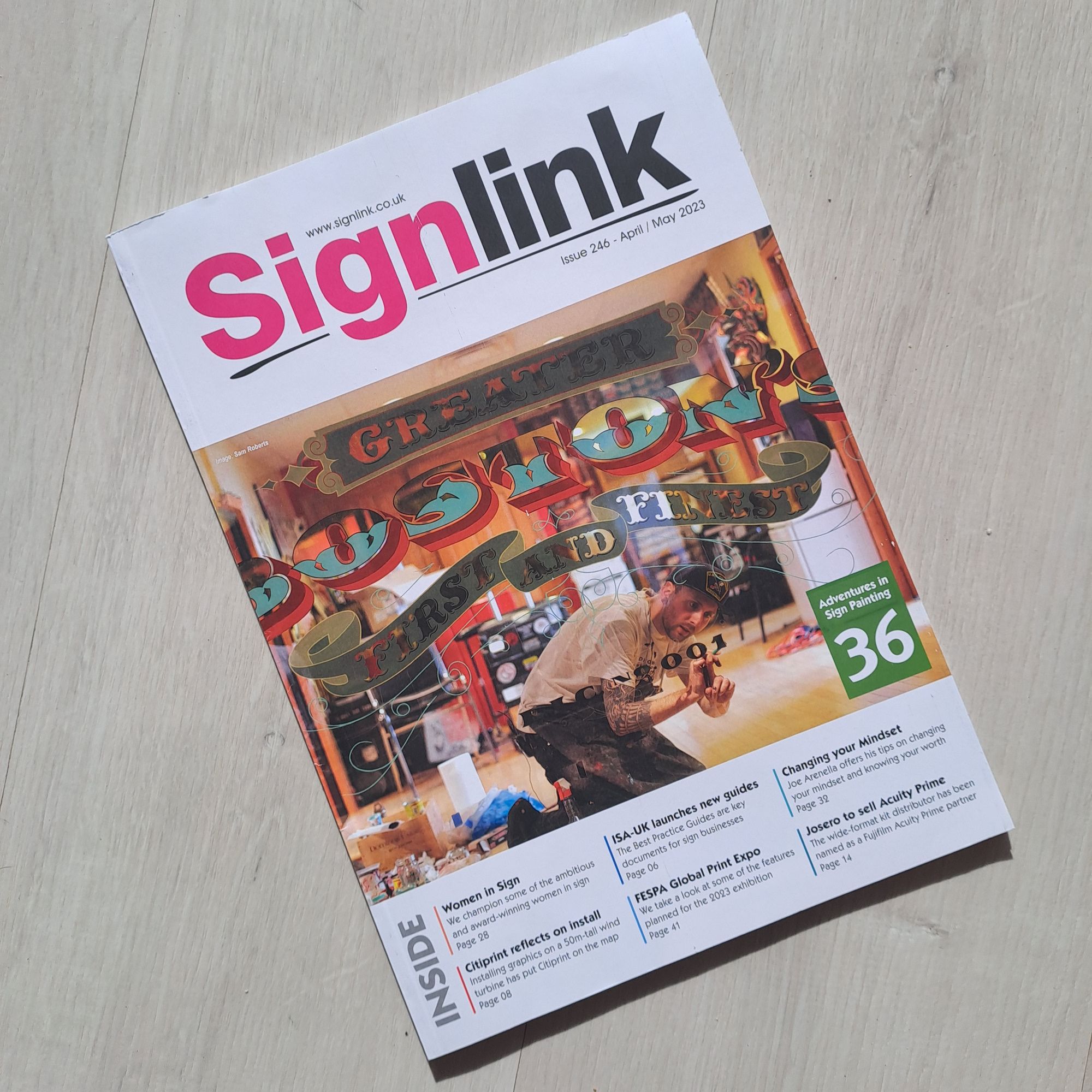
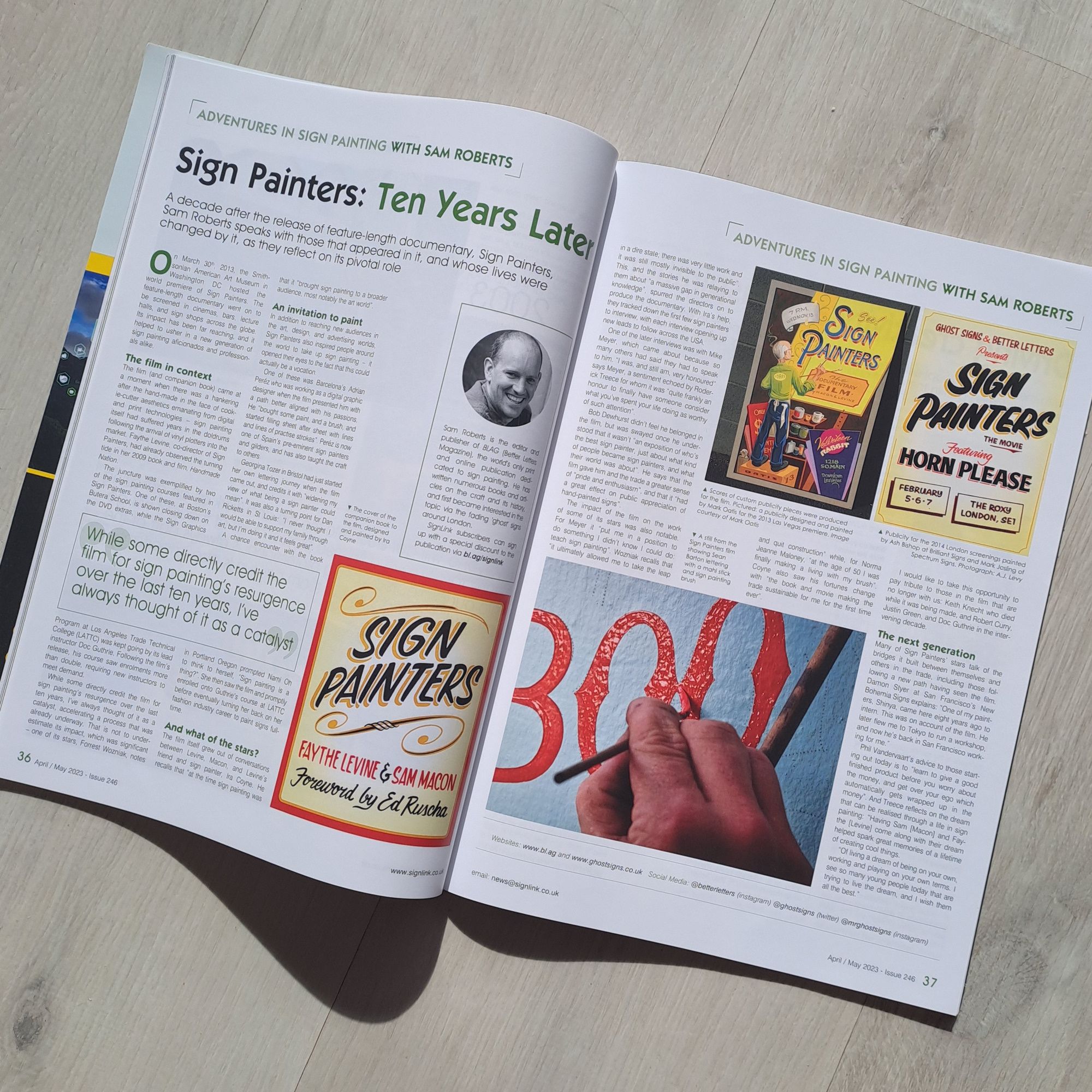
Issue 246 of Signlink magazine, April/May 2022, featuring reflections on ten years since the release of Sign Painters.
While pulling the article together, I approached a number of the film's stars who generously wrote back with very detailed responses. I have therefore pasted the full text of my article below, with a few adaptations for this site, followed by a more extended selection of these sign painter reflections.
It's a long read, so grab a drink and settle in...
Sign Painters: Ten Years Later
A decade after the release of Sign Painters, those that appeared in it, and whose lives were changed by it, reflect on its pivotal role.
On 30th March 2013, the Smithsonian American Art Museum in Washington DC hosted the world premiere of Sign Painters (@sign_painters). The feature-length documentary went on to be screened in cinemas, bars, lecture halls, and sign shops across the globe. Its impact has been far-reaching, and it helped to usher in a new generation of sign painting aficionados and professionals alike.
Sign Painters (official trailer).
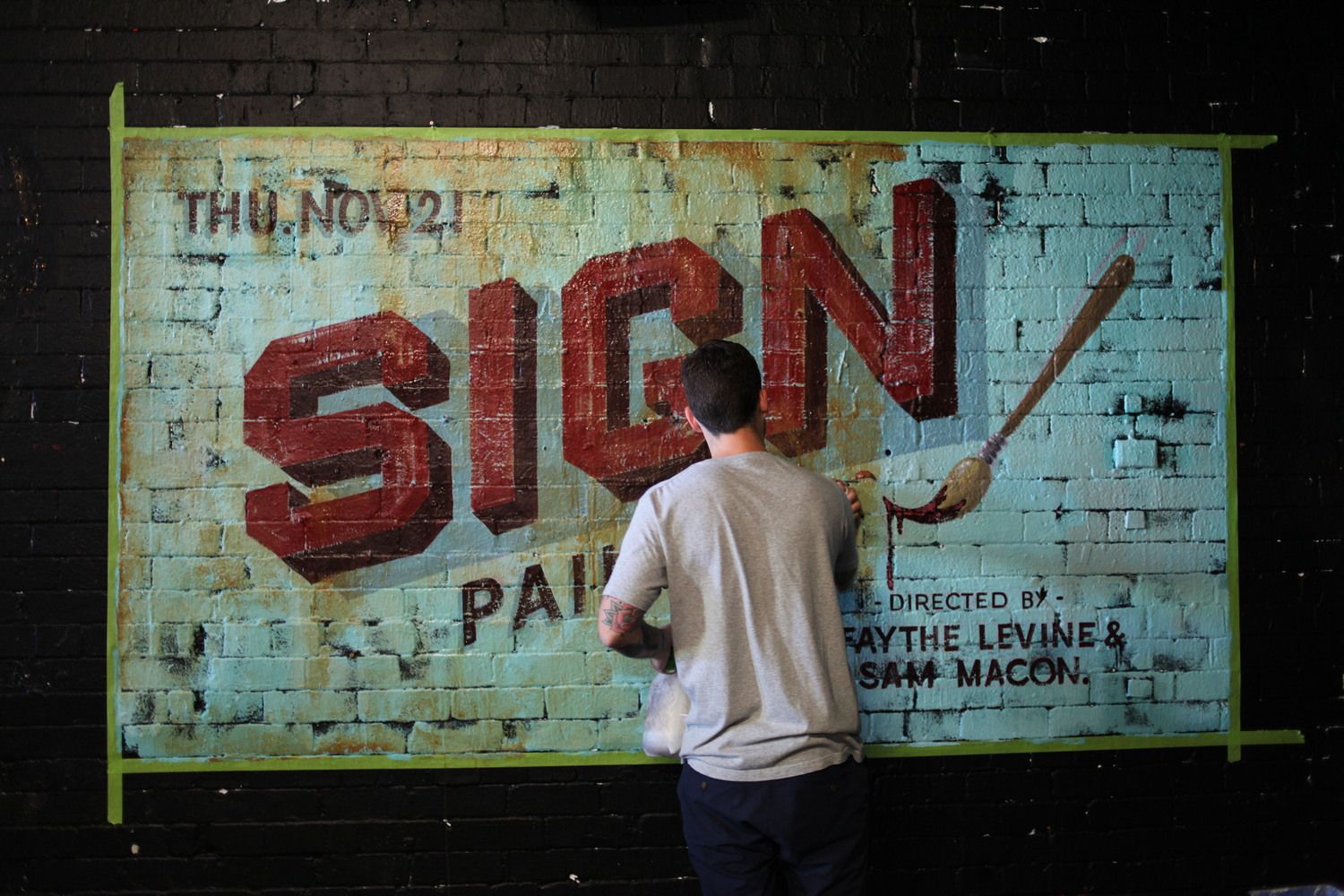
As the film toured the world, sign painters, typographers, artists, and graphic designers produced publicity materials for its screenings. This collection is just a small sample of those.
The Film in Context
The film (and companion book) came at a moment when there was a hankering after the hand-made in the face of cookie-cutter aesthetics emanating from digital and print technologies—sign painting itself had suffered years in the doldrums following the arrival of vinyl plotters into the market. Faythe Levine (@faythelevine), co-director of Sign Painters, had already observed the turning tide in her 2009 book and film, Handmade Nation.
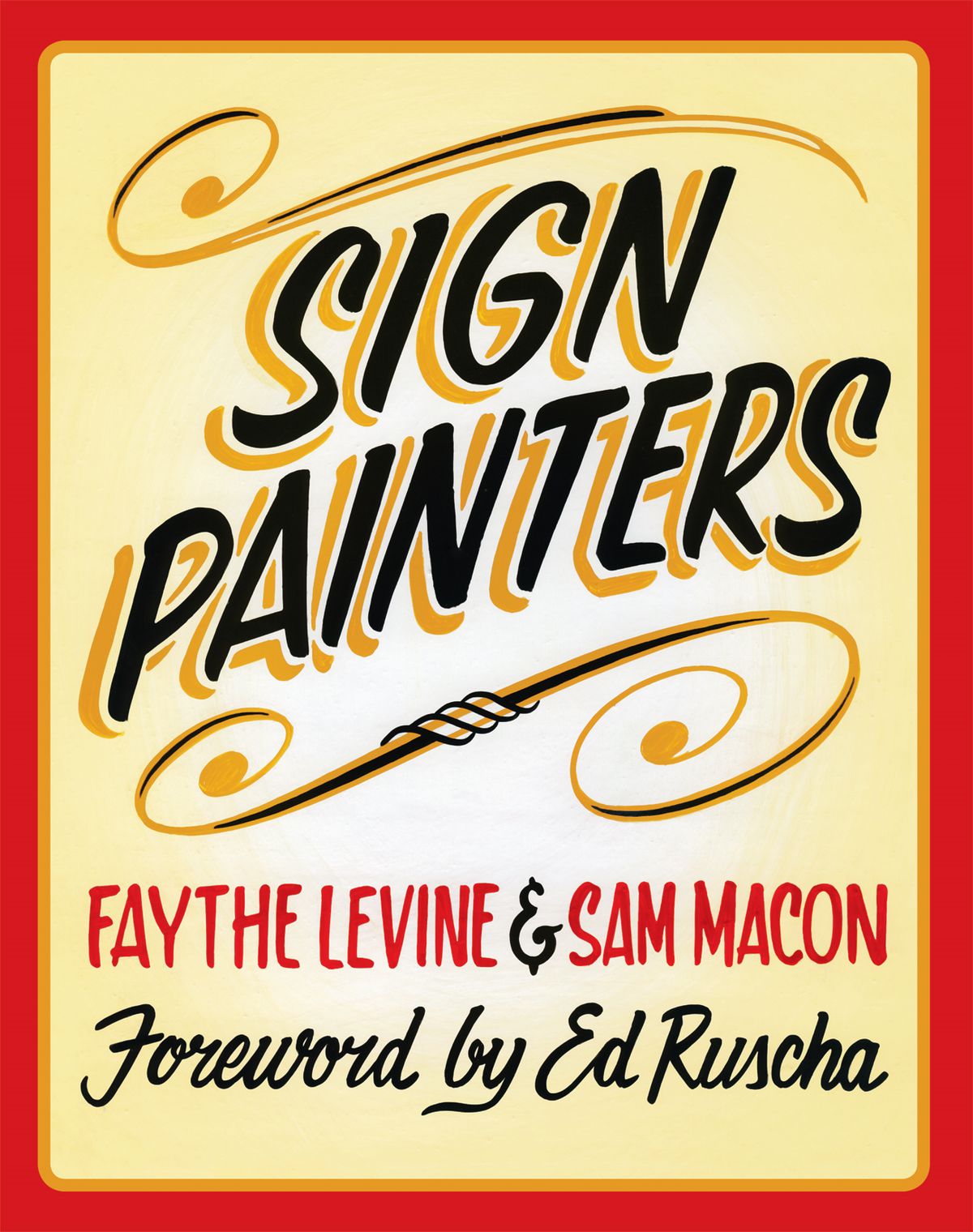
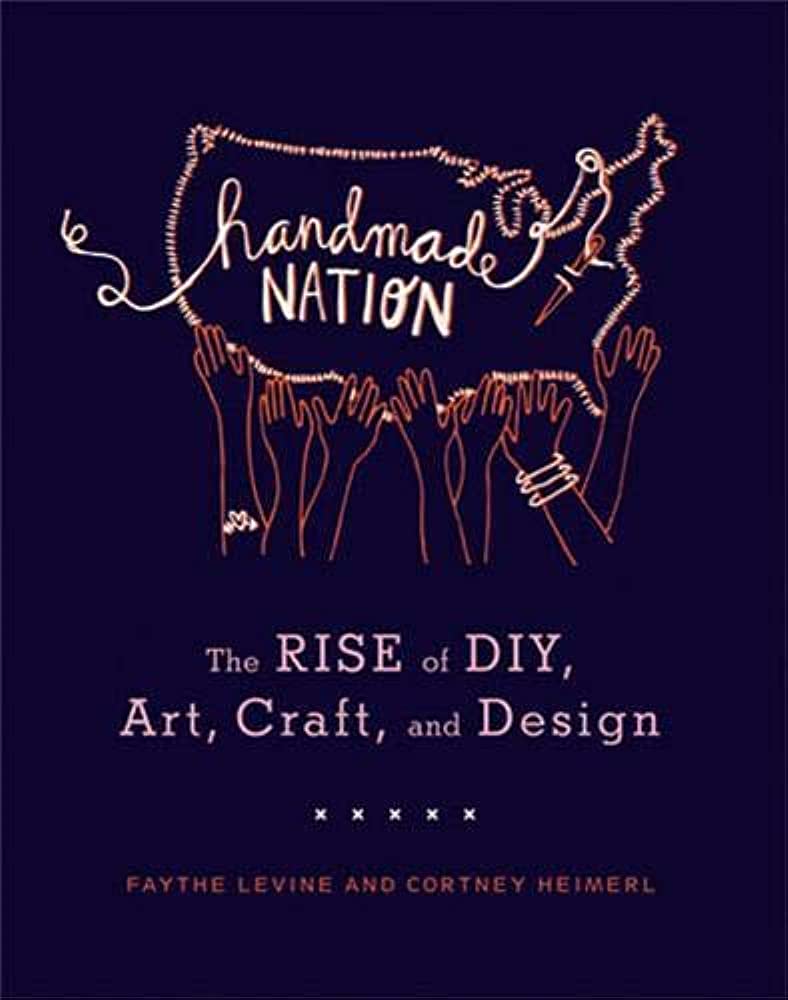
Sign Painters, the book, and its precursor from Faythe Levine, Handmade Nation. Both books published by Princeton Architectural Press.
The juncture was exemplified by two of the sign painting courses featured in Sign Painters. One of these, at Boston’s Butera School, is shown closing down on the DVD extras, while the Sign Graphics Program at Los Angeles Trade Technical College (LATTC) was kept going by its lead instructor Doc Guthrie. Following the film’s release, his course saw enrolments more than double, requiring new instructors to meet demand.
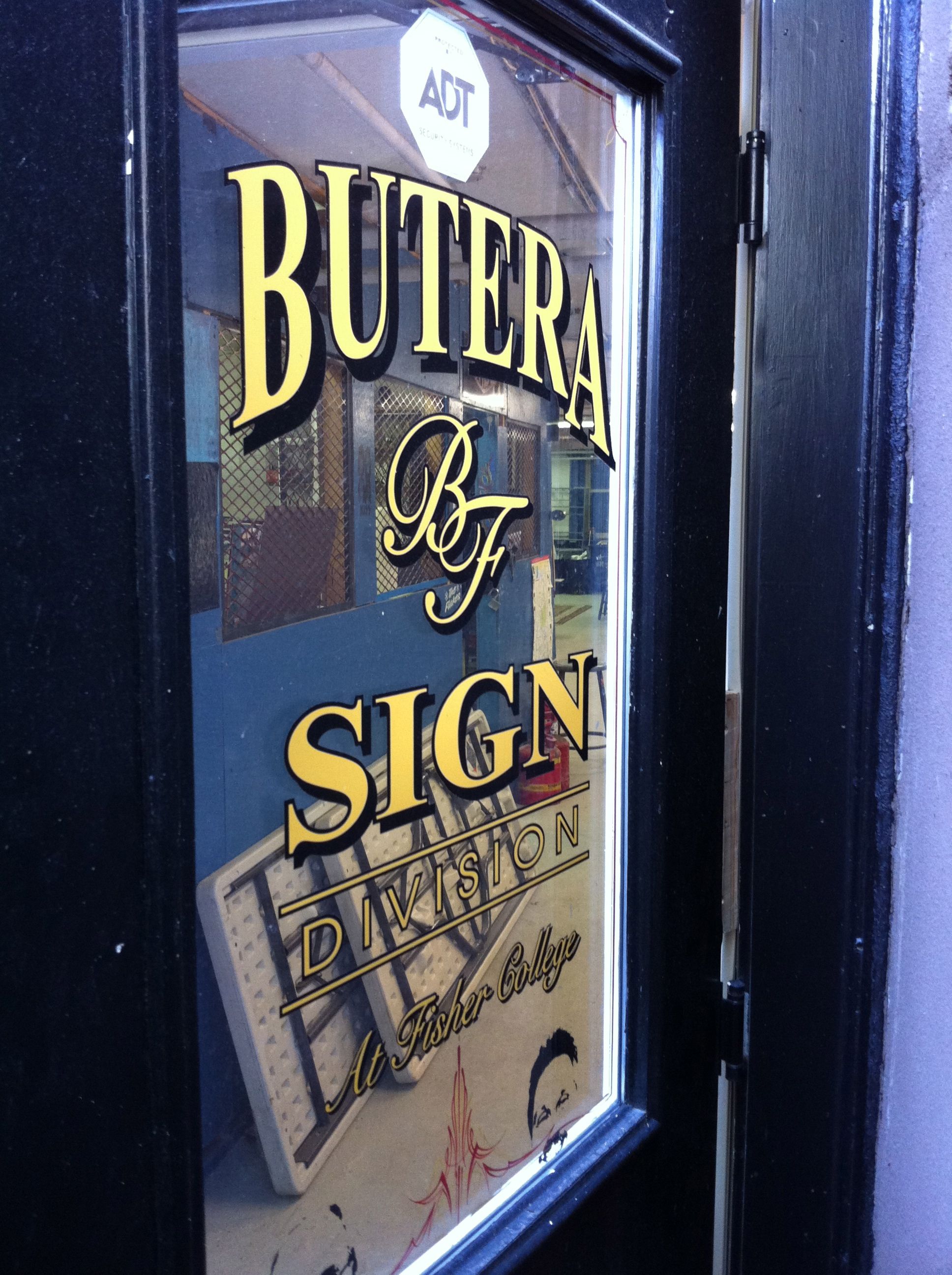
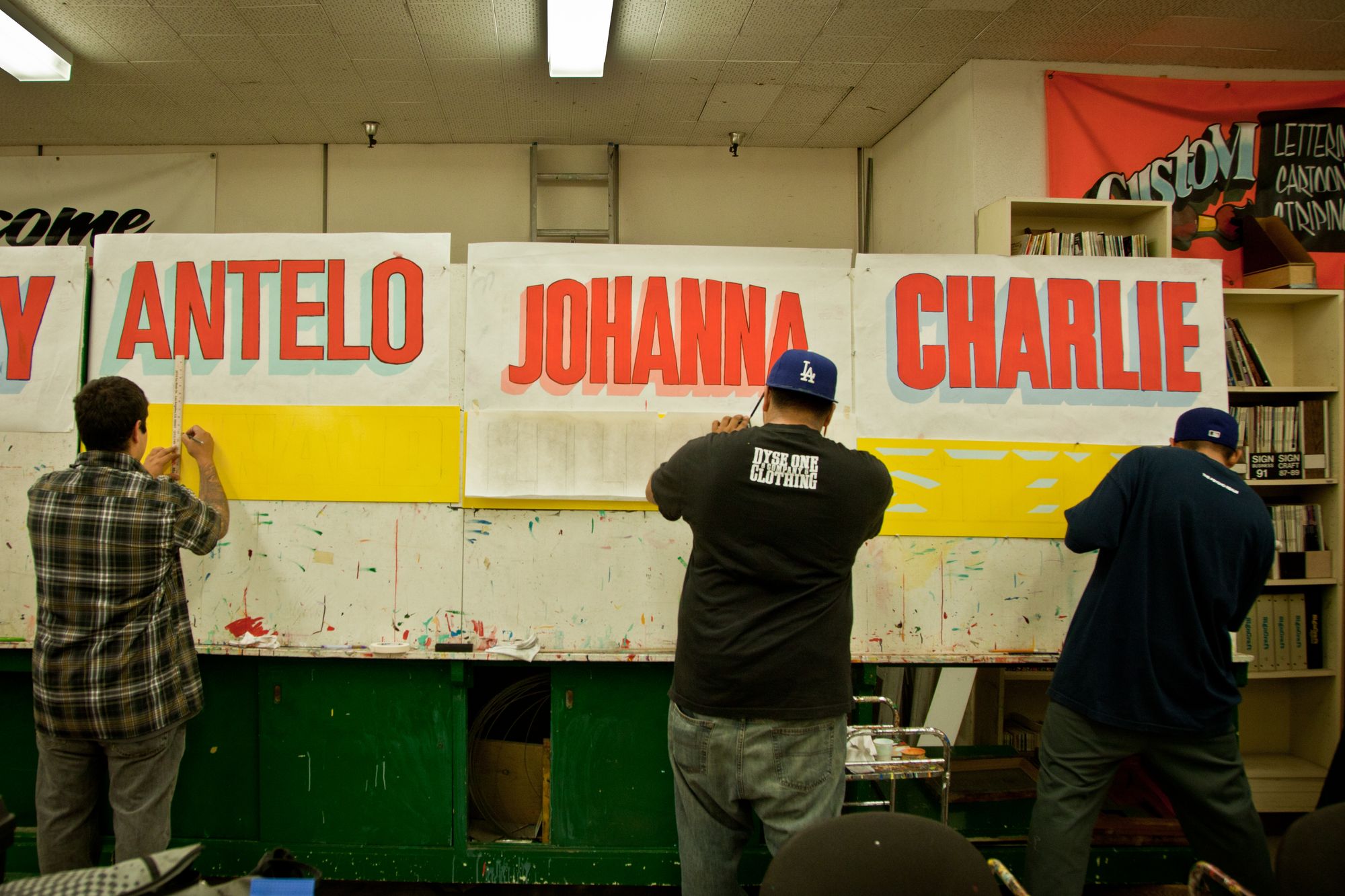
Door at the former Butera Sign Division, and student at work on the Sign Graphics Program at Los Angeles Trade Technical College. Photos from the Sign Painters' Flickr.
While some directly credit the film for sign painting’s resurgence over the last ten years, I’ve always thought of it as a catalyst, accelerating a process that was already underway. That is not to underestimate its impact, which was significant—one of its stars, Forrest Wozniak (@forrestwozniak), notes that it “brought sign painting to a broader audience, most notably the art world”.
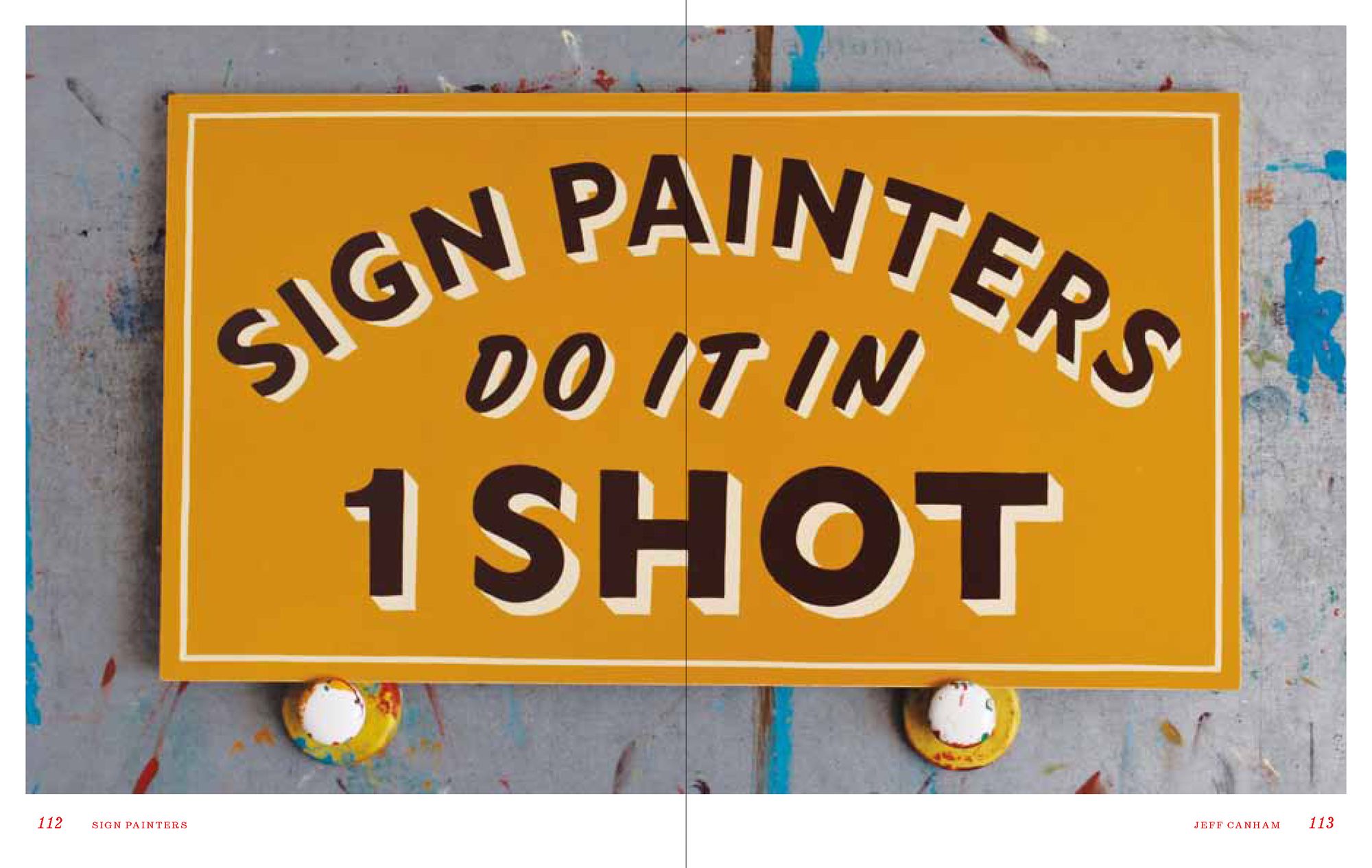
An Invitation to Paint
In addition to reaching new audiences in the art, design, and advertising worlds, Sign Painters also inspired people around the world to take up sign painting—it opened their eyes to the fact that this could actually be a vocation.
One of these was Barcelona’s Adrian Peréz (@eldeletrista) who was working as a digital graphic designer when the film presented him with a path better aligned with his passions. He “bought some paint, a brush, and started filling sheet after sheet with lines and lines of practise strokes”. Peréz is now one of Spain’s pre-eminent sign painters and gilders, and has also taught the craft to others.
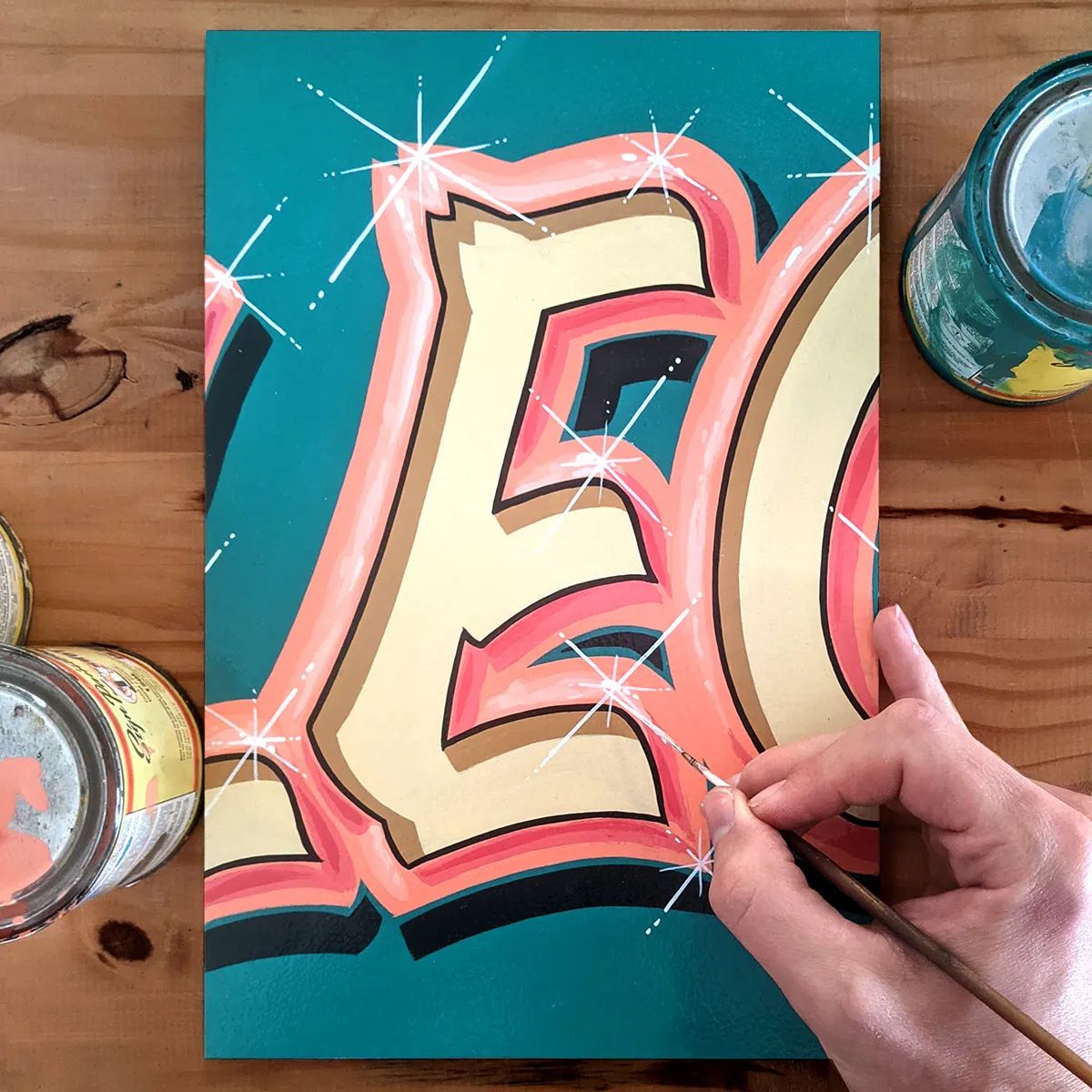
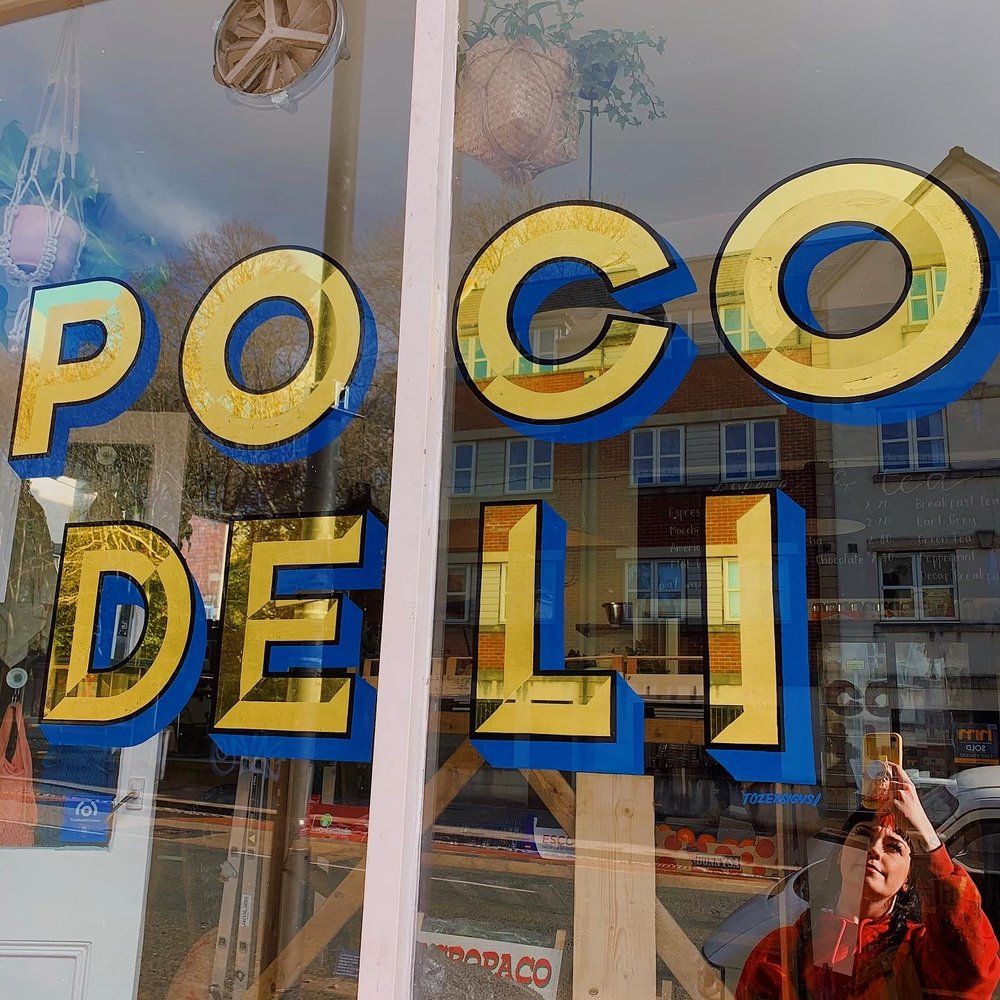
Work by Barcelona's Adrian Peréz (left) who was inspired to follow his sign painting by Sign Painters eight years ago, and Bristol's Georgina Tozer for whom the film gave "a sense of closeness and community".
Georgina Tozer (@tozersigns) in Bristol had just started her own lettering journey when the film came out, and credits it with “widening my view of what being a sign painter could mean”. It was also a turning point for Dan Ricketts (@stl_sign_and_mural) in St Louis:
“I never thought I would be able to support my family through art, but I’m doing it and it feels great”.
A chance encounter with the book in Portland Oregon prompted Nami Oh (@ohnami.signs) to think to herself, “Sign painting is a thing?”. She then saw the film and promptly enrolled onto Guthrie’s course at LATTC before eventually turning her back on her fashion industry career to paint signs full time.
And What of the Stars?
The film itself grew out of conversations between director Levine, Sam Macon (@sam_macon), and Levine’s friend, and sign painter, Ira Coyne (@icsigns). He recalls that “at the time sign painting was in a dire state; there was very little work and it was still mostly invisible to the public”. This, and the stories he was relaying to them about “a massive gap in generational knowledge”, spurred the directors on to produce the documentary. With Ira’s help, they tracked down the first few sign painters to interview, with each interview opening up new leads to follow across the USA.
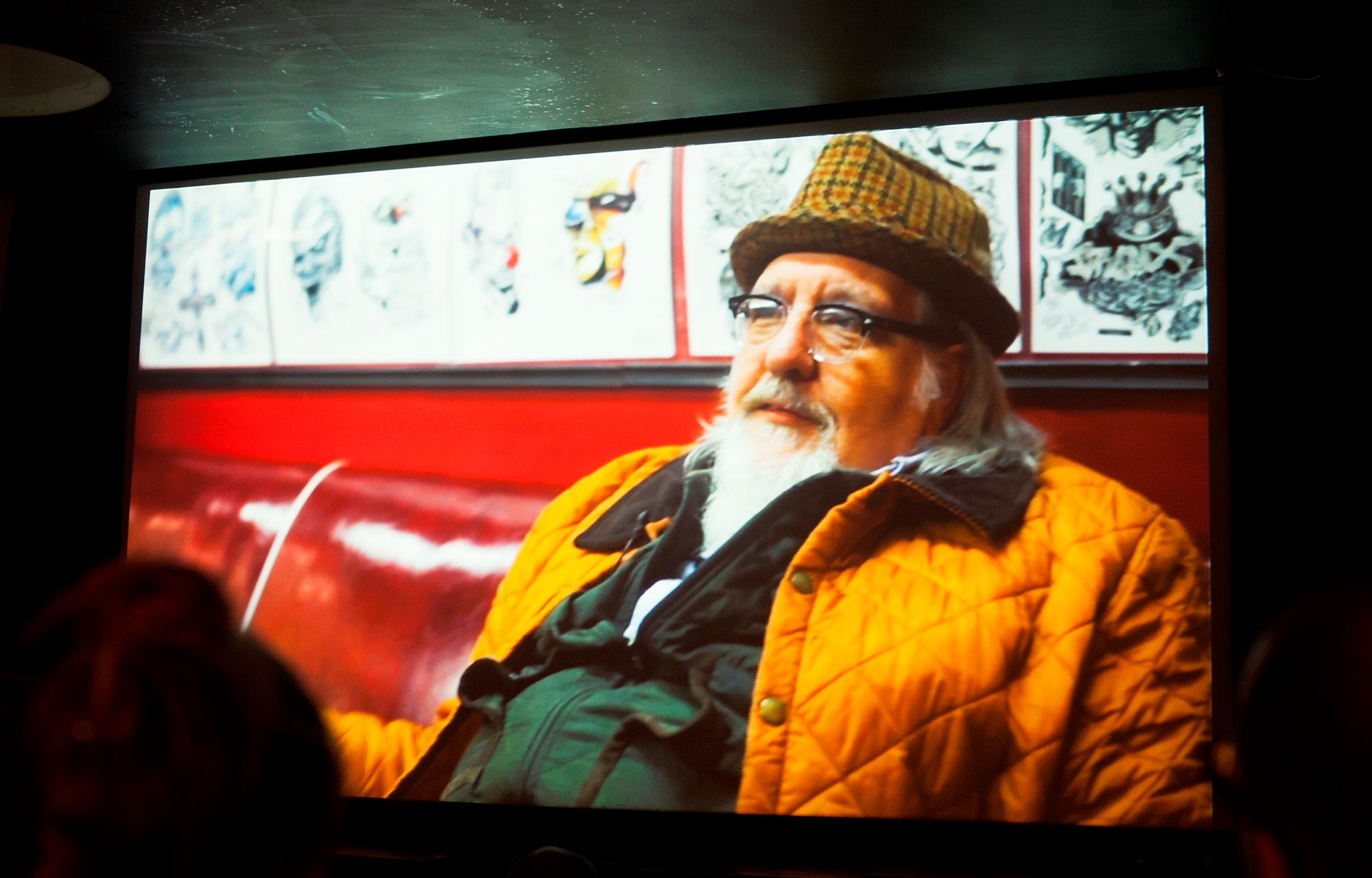
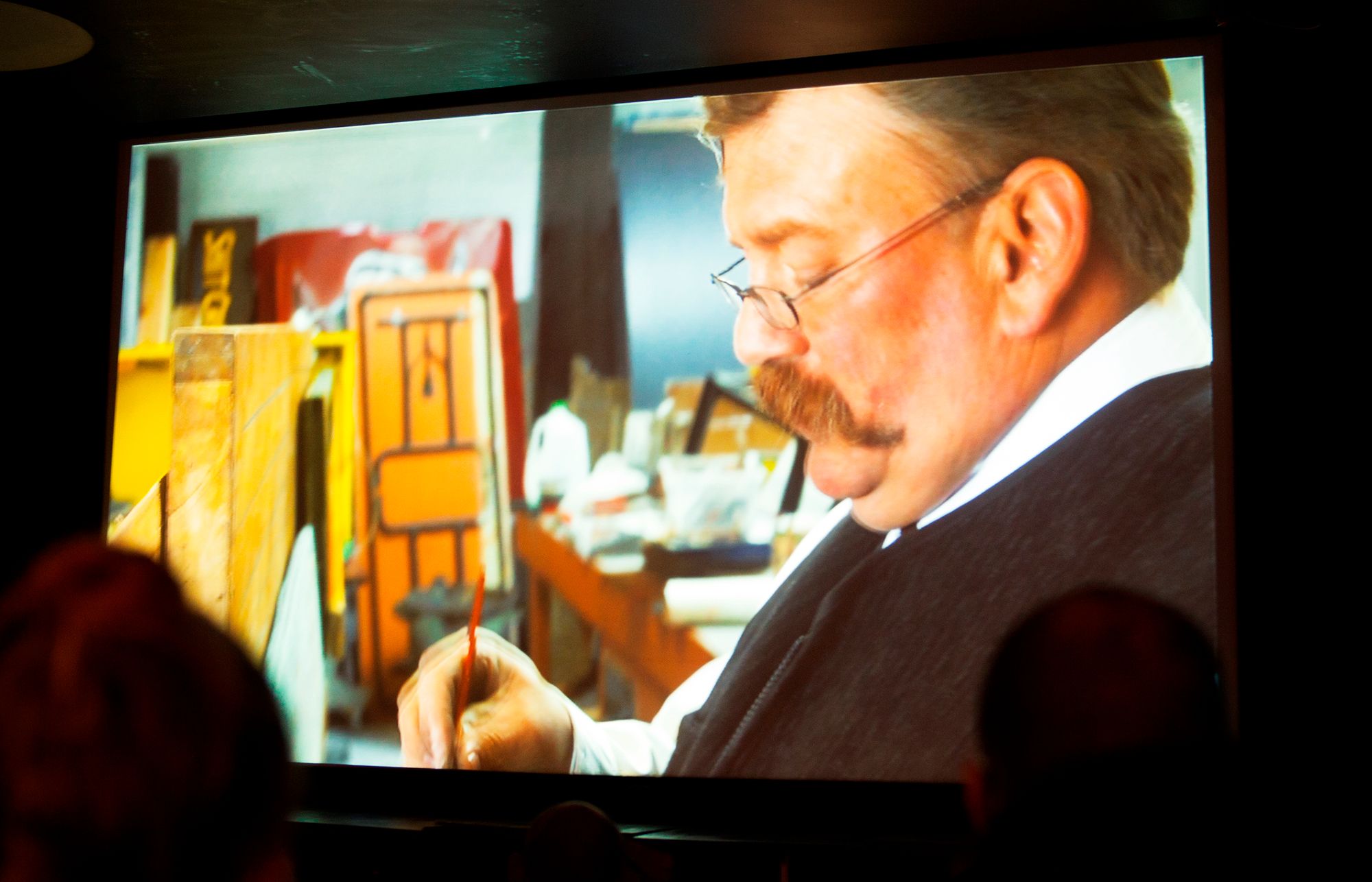
Ernie Gosnell and Mike Meyer in the Sign Painters film. Photos by A.J. Levy from the 2014 London screenings.
One of the later interviews was with Mike Meyer (@this_is_the_real_mike_meyer), which came about because so many others had said they had to speak to him. “I was, and still am, very honoured” says Meyer, a sentiment echoed by Roderick Lane Treece (@customglasssigns) for whom it was “quite frankly an honour to finally have someone consider what you’ve spent your life doing as worthy of such attention”.
Bob Dewhurst (@nevadahandpainted) didn’t feel he belonged in the film, but was swayed once he understood that it wasn’t “an exposition of who’s the best sign painter, just about what kind of people became sign painters, and what their world was about”. He says that the film gave him and the trade a greater sense of “pride and enthusiasm”, and that it “had a great effect on public appreciation of hand-painted signs”.
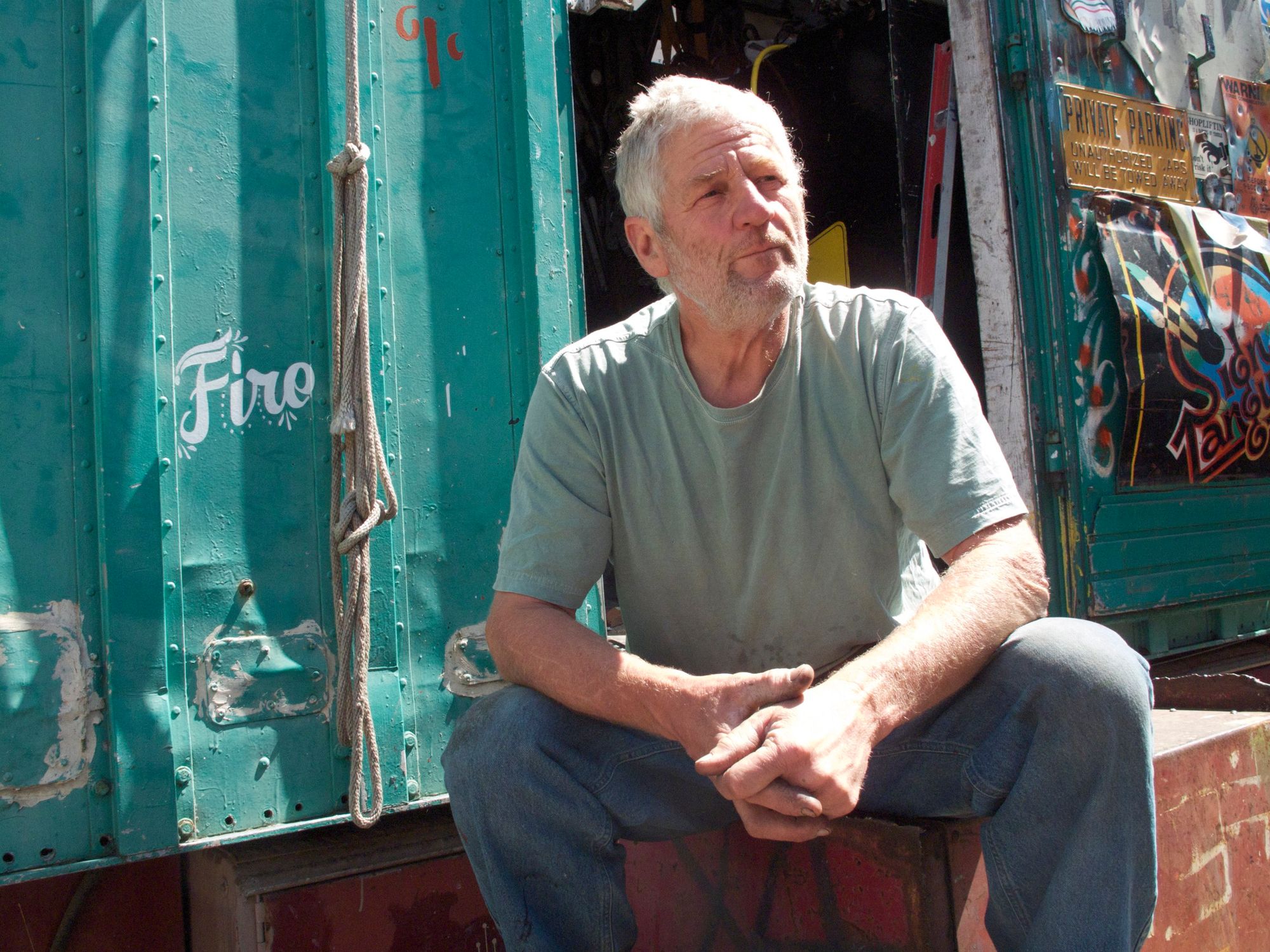
The impact of the film on the work of some of its stars was also notable. For Meyer it “put me in a position to do something I didn’t know I could do: teach sign painting”. Wozniak recalls that “it ultimately allowed me to take the leap and quit construction” while, for Norma Jeanne Maloney (@redrider_studios), “at the age of 50 I was finally making a living with my brush”. Coyne also saw his fortunes change with “the book and movie making the trade sustainable for me for the first time ever”.
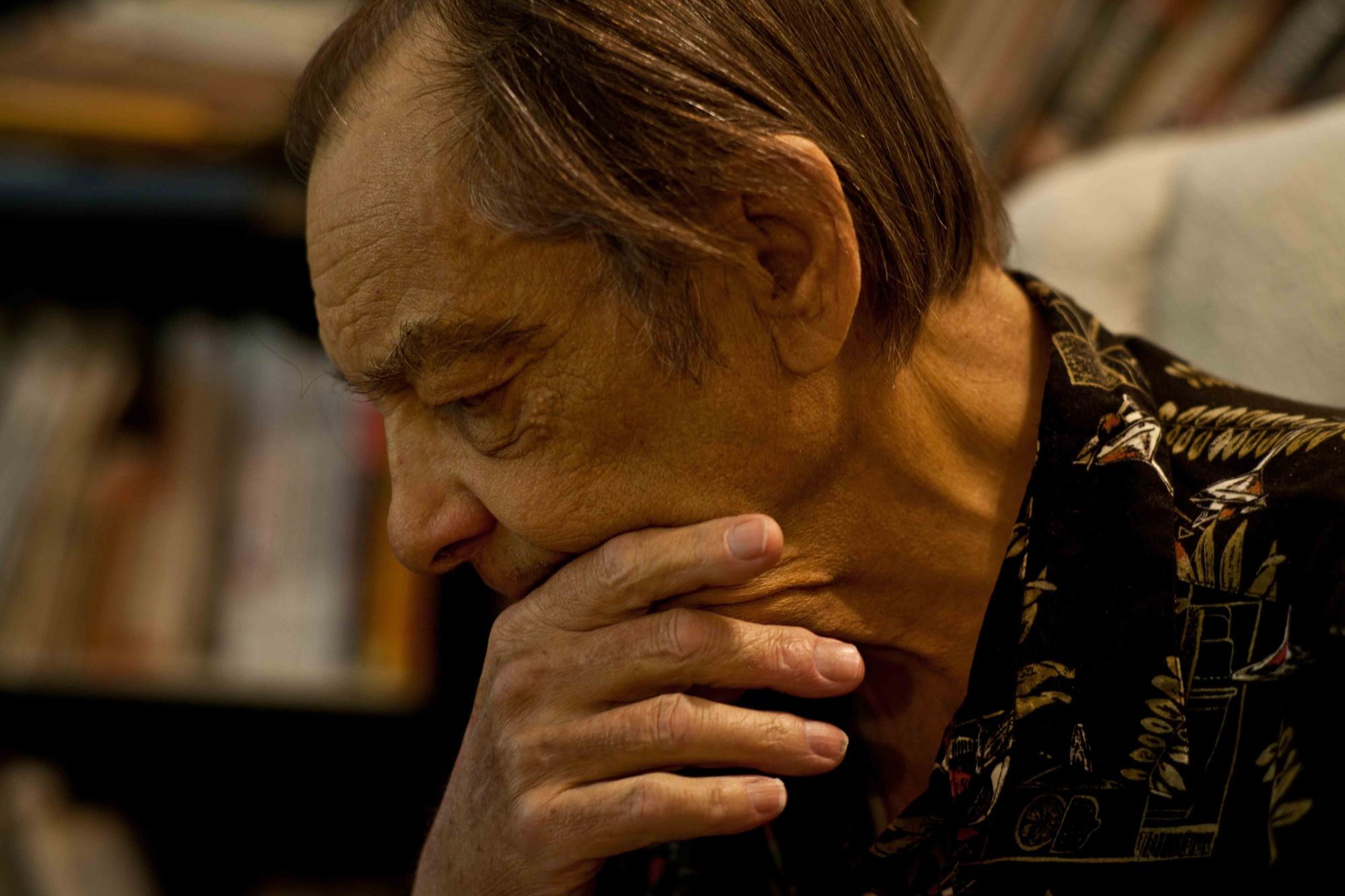
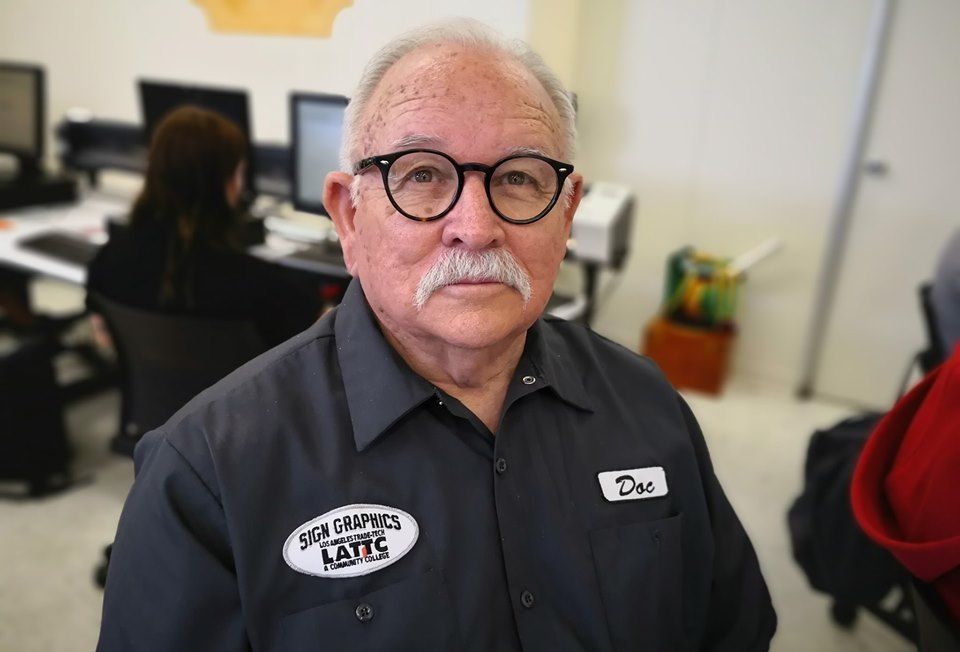
A tribute to Doc Guthrie who passed away in November 2022.
The Next Generation
Many of Sign Painters’ stars talk of the bridges it built between themselves and others in the trade, including those following a new path having seen the film. Damon Styer at San Francisco’s New Bohemia Signs (@nbsigns) explains:
“One of my painters, Shinya (@moderntwistsigns), came here eight years ago to intern. This was on account of the film. He later flew me to Tokyo to run a workshop, and now he's back in San Francisco working for me.”
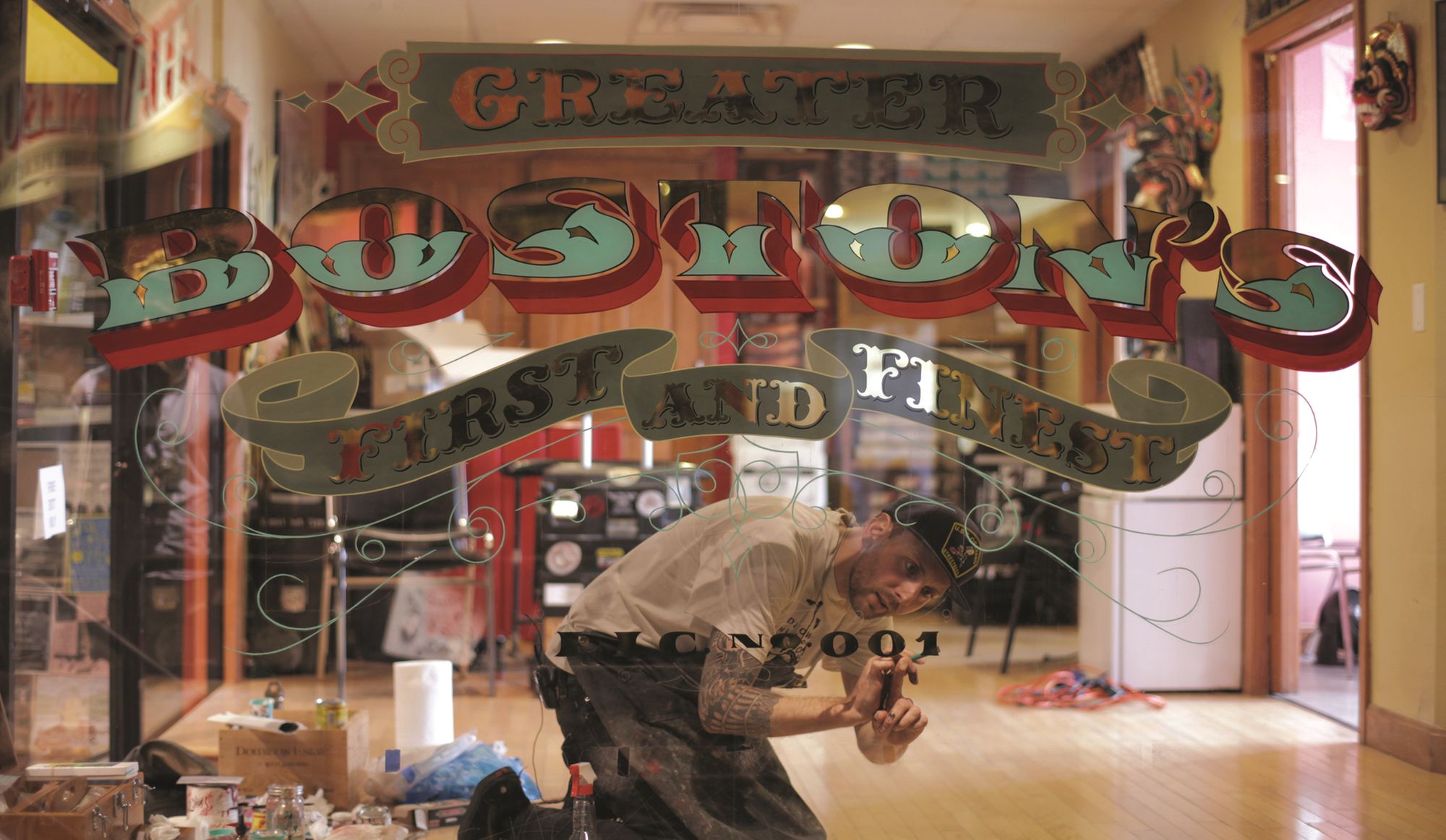
Phil Vandervaart’s advice to those starting out today is to “learn to give a good finished product before you worry about the money, and get over your ego which automatically gets wrapped up in the money”. And Treece reflects on the dream that can be realised through a life in sign painting:
“Having Sam [Macon] and Faythe [Levine] come along with their dream helped spark great memories of a lifetime of creating cool things. Of living a dream of being on your own, working and playing on your own terms. I see so many young people today that are trying to live the dream, and I wish them all the best.”
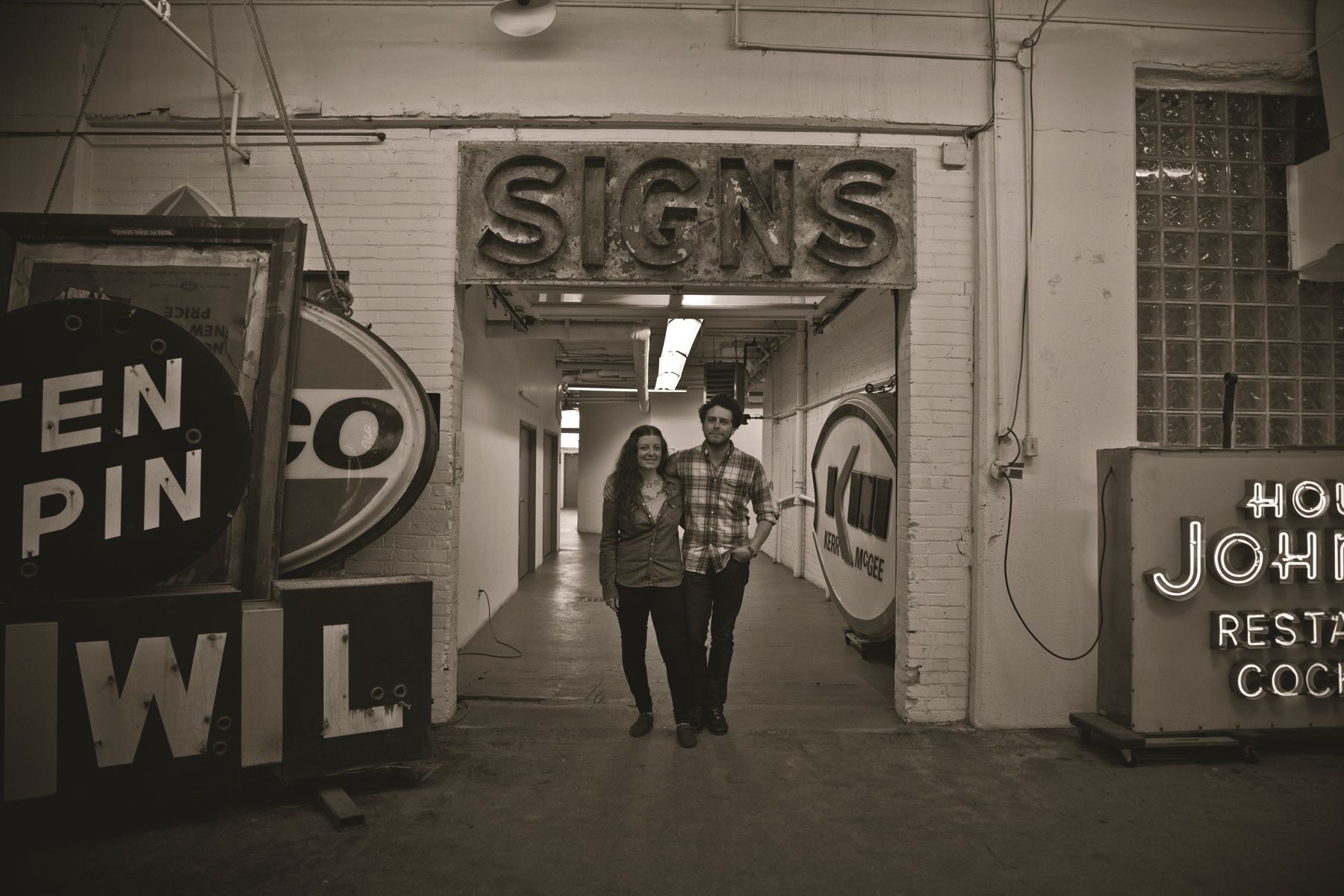
Further Reflections on Sign Painters' Impact
For the article above, I contacted some of Sign Painters' stars to ask for their reflections on the film one decade after its release. I received replies with a lot more detail than I was expecting, and these had to be heavily edited for the article above. Here I'm delighted to share a lot more, and would like to thank each of these sign painters for taking the time to give such considered responses.
For those that would prefer to read these answers in printed form, I have also made them available as a PDF. It's 14 pages in total, and can be downloaded below.
